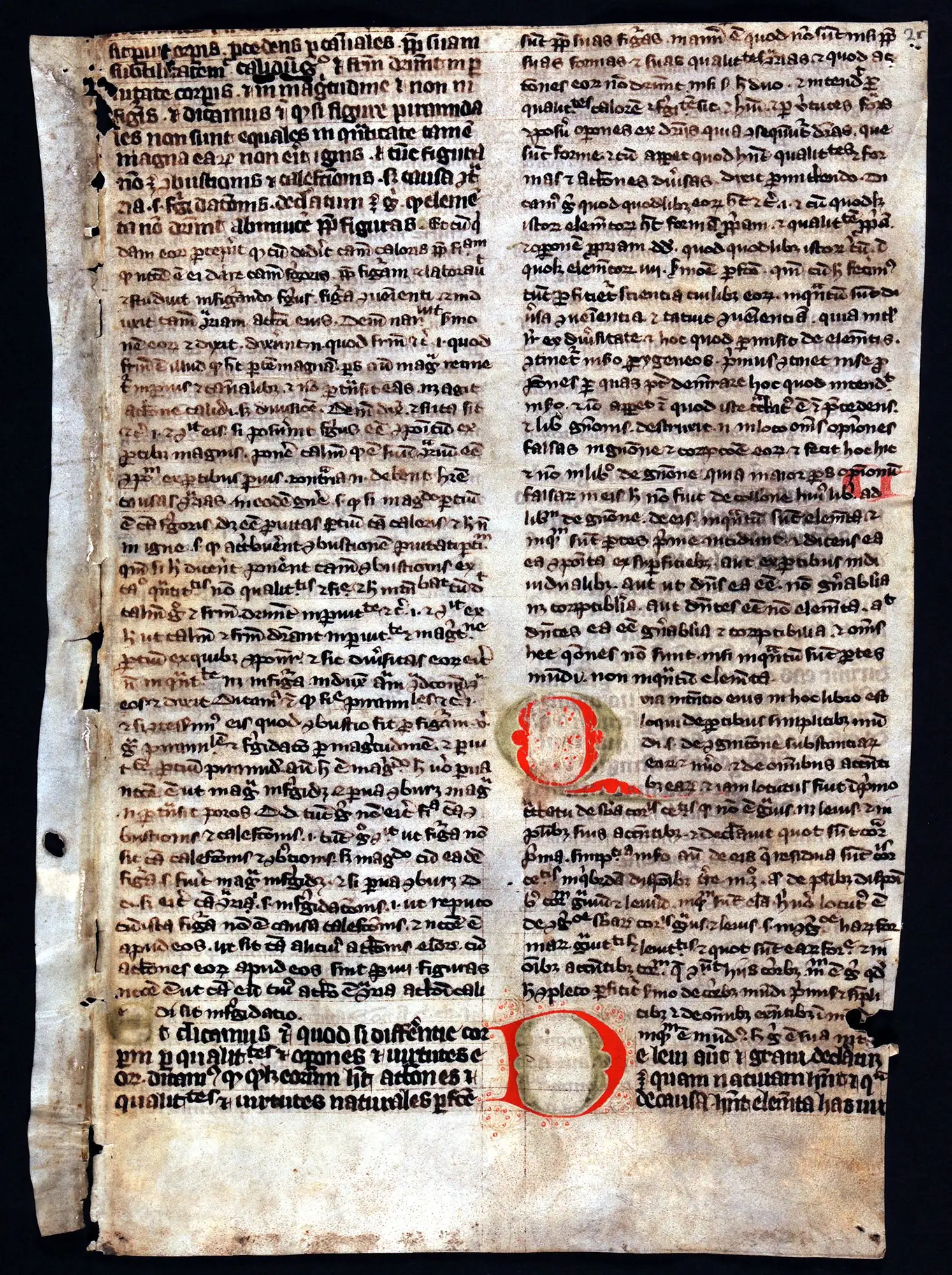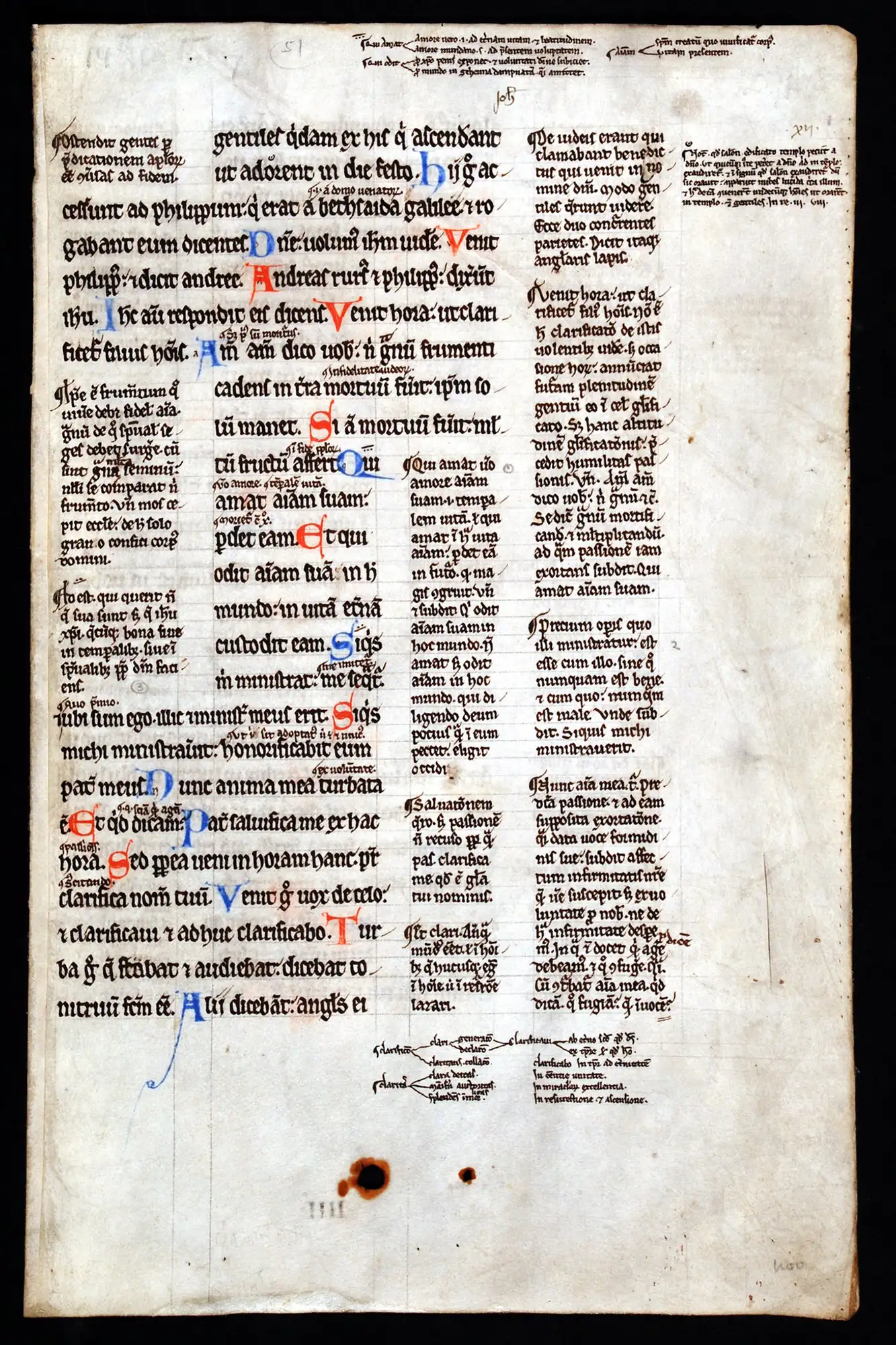Case 4

Single leaf from Aristotle’s De Caelo, with commentary, in Latin. England, ca. 1400. Reed MSF23b.
Although Gothic was the most common script in books, it was not the only handwriting style in use. In this fragment, Aristotle’s text is written in the larger, darker, rounded Gothic script. The longer commentary is written in a cursive bookhand, sometimes known as a ‘Secretary’ script.
This fragment, from a scholastic commentary on one of the great scientific texts, was recovered from a binding. Aristotle was extensively studied at Oxford, and many similar surviving waste leaves derive from sixteenth century Oxford bookbindings.

Single leaf from Aristotle’s De Caelo, with commentary, in Latin. England, ca. 1400. Reed MSF23b.
Open image in new window

Single leaf from Gospel of St John, glossed, in Latin. France, ca. 1225. Reed MSF8.
This fragment is notable for its complex page layout – with several irregularly shaped columns, some nested within each other. It contains two different texts written over four columns in a rectangular block. The Gospel of St John is written in the larger Gothic script; with the gloss in the surrounding columns and in the spaces between the lines in a smaller Gothic script. Glosses explain foreign or complicated words or passages. Annotations also appear, in a small script, in the margins.
This fragment is from a copy of St John with the gloss of Anselm of Laon (d.1117).

